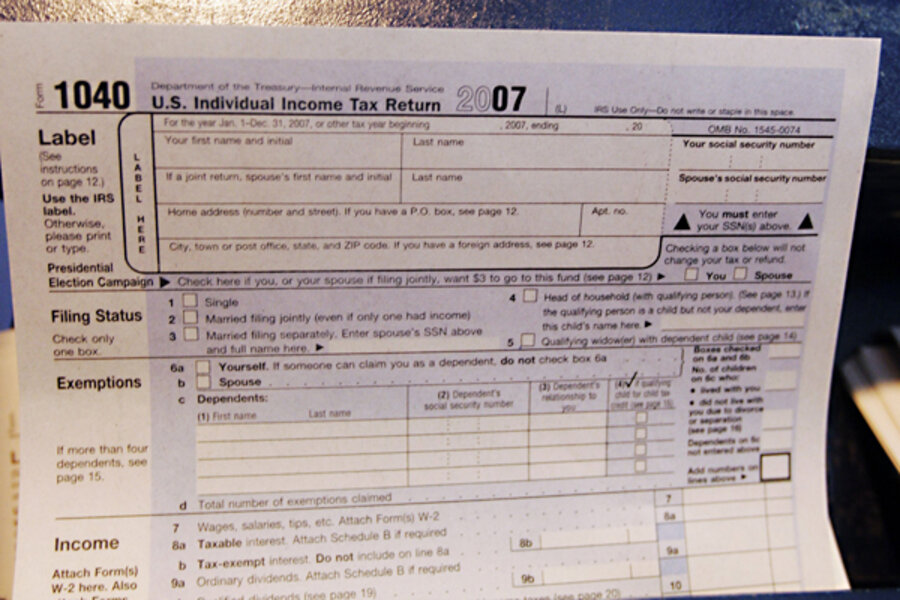Limting itemized deductions is a no-brainer
Loading...
It’s a proposal that has come up over and over again in President Obama’s budget, and one that I hope will come up yet again. In my column in today’s Tax Notes, I remind readers that this is a great idea whose time has (been overdue to) come: the proposal to limit itemized deductions–to either 28 percent (the President’s version) or 15 percent (the more aggressive version suggested by CBO’s budget options volume). I like it because it’s a proposal to raise a lot of revenue (and reduce the deficit), yet by reducing a large tax expenditure in a progressive way.
How much revenue would the proposal likely raise? A lot. I refer to CBO estimates:
The CBO estimates the president’s proposal would raise $293 billion over 10 years. A more ambitious version limiting itemized deductions to a 15 percent rate, as presented in the CBO’s compendium of budget options, would raise $1.2 trillion over 10 years — in other words, equivalent to trimming overall tax expenditures [which are over $1 trillion per year] by about 10 percent through that one policy change alone.
A lot of people get confused about this proposal, thinking that it eliminates the tax subsidy for households above the limiting bracket, but it does far from that. It only limits the size of the subsidy so that the richest households don’t get the biggest subsidies per level of the subsidized activities (in both percentage terms and dollar terms), which makes the proposal a very “progressive” way to reduce a (huge) tax expenditure. Right now the subsidy is a regressive one, because for any given level of subsidized activity, higher-bracket households get the biggest subsidies. I constructed the table above to make clearer how that upside-down subsidy works, and how the limit would level at least part of it–the upper end–out. These proposals would not get rid of the regressivity below the limiting bracket, however, which could only be achieved if we went all the way to converting the deduction to a (refundable) credit. Ideally, I would like to see all deductions converted to credits, but limiting deductions to 28 or 15 percent is a good step along that policy path.
And to counter arguments that this would kill the economic activities currently subsidized by the (full) itemized deduction, well, the evidence is actually very inconclusive about how much this tax subsidy actually makes a difference in the level of the subsidized activities (charitable giving, borrowing for homeownership), because it is always difficult to distinguish between real behavioral responses versus tax-strategic ones. Often these tax subsidies just reward behavior rather than influence it, or they encourage something that is not quite the lofty social goal that policymakers had in mind. As I point out in my column:
Assuming that the goal is in fact to encourage and steer resources to the activities that are subsidized, the case for the effectiveness of this particular form of subsidy depends on how much more responsive higher-income households are to the [price incentive] effect than are lower-income households. This is an empirical question that’s difficult to answer from the data because high-income households with the biggest price subsidies are also those with the greatest income capacity (who might donate the most to charity or buy the largest houses regardless of the itemized deduction). And while the evidence that’s out there shows some price responsiveness, it’s not always clear that it’s the type of responsiveness we would want. A larger charitable deduction might encourage more reported giving without increasing real giving, and a larger mortgage interest deduction might encourage people to buy larger houses rather than helping them to buy any house. And all of the deductions may merely reward behavior that would have taken place anyway.
So I put out my column as my strong endorsement of this proposal. The bottom line is that this is a way to raise substantial revenue from only higher-income households and would actually improve economic efficiency (reduce the distortions caused by the tax subsidies). It’s a base-broadening, revenue-raising, deficit-reducing, yet government-shrinking proposal. It’s consistent with the fiscal policy goals of both Democrats and Republicans. It would also be a piece of cake to implement, unlike other base-broadening proposals that have similar economic advantages. Why don’t we just do it, finally?!!








